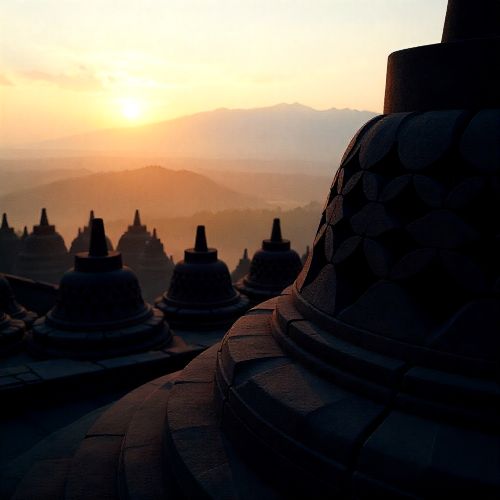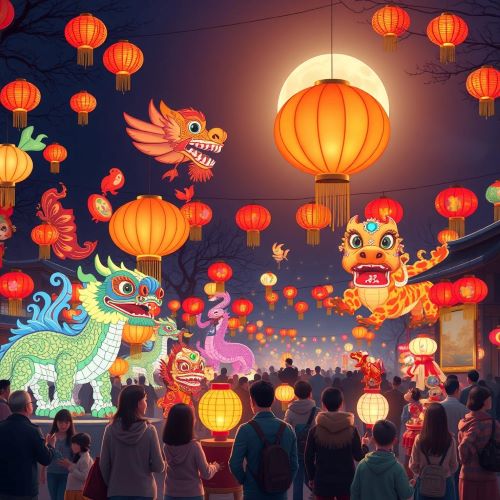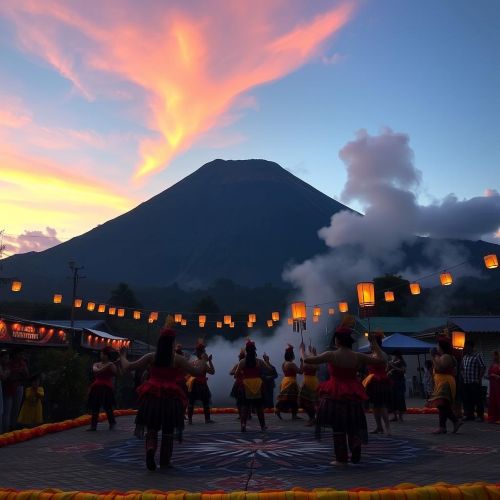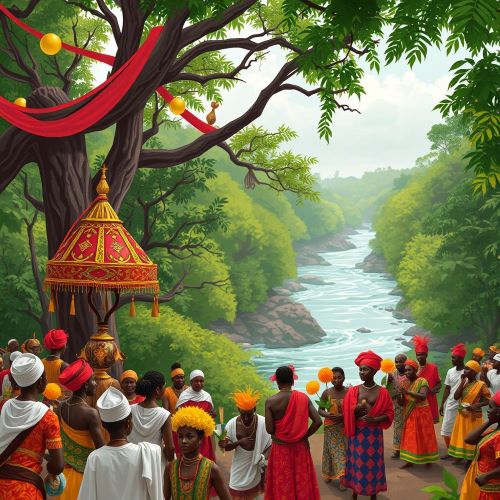Mid-Autumn Festival : The Moon Festival
At a glance
| Description | |
|---|---|
| Location | South East Asia |
| Country | China, Taiwan, Vietnam, Malaysia, Singapore |
| Dedicated To | Change’e |
| Duration | 1 day |
| Time of Year | September – October |
Introduction
The Mid-Autumn Festival, also known as the Moon Festival, is one of the most beloved traditional celebrations across China and many parts of Asia. Held on the 15th day of the eighth lunar month, it marks the point when the moon appears brightest and fullest in the night sky. For generations, this festival has symbolized reunion, gratitude, and prosperity, bringing families together under the soft glow of moonlight. With its roots stretching back over three millennia, it has become a rich tapestry of myth, food, rituals, and shared moments that continues to resonate with people of all ages.
Connection with Mythology
Mythology plays a central role in the Mid-Autumn Festival, weaving a timeless narrative that enriches the holiday’s cultural depth. At the heart of these tales is Chang’e, the Moon Goddess, whose legend is deeply intertwined with the festival’s symbolism. Her ascent to the moon after consuming a sacred elixir left behind by her husband, Hou Yi, speaks of love, sacrifice, and immortality—emotions echoed in the moon’s lonely brilliance.
Accompanying Chang’e is the Jade Rabbit, a celestial creature that became a fixture in Chinese lore after offering itself in an act of selflessness. Instead of being lost in fire, it was honored with a place on the moon, where it is said to pound medicine in a mortar. Another enduring story is that of Wu Gang, a man condemned to endlessly chop down a self-healing tree on the moon as penance. His tale reminds us of the human struggle against fate and the beauty of perseverance, themes that subtly influence how people view life’s challenges during this reflective time.
Main Activities
The Mid-Autumn Festival is celebrated with a variety of joyful and symbolic customs. Chief among them is sharing mooncakes, the signature treat of the season. These dense, round pastries are often filled with lotus seed paste or salted egg yolk and are gifted between family and friends as a token of unity and good fortune.
Moon gazing is another cherished tradition. Families gather outdoors or on rooftops, admiring the luminous full moon while enjoying tea and seasonal fruits like pomelos, persimmons, and grapes, which represent abundance and family well-being.
Lanterns, both traditional and modern, light up streets and homes. From intricately crafted paper lanterns to glowing animal-shaped ones for children, they add color and light to the night. In many places, lantern riddle games encourage wit and interaction, blending entertainment with culture.
Festive areas may also feature cultural performances, including dragon and lion dances, which bring energy and spectacle to public spaces. In more traditional households, moon worship rituals include placing offerings to Chang’e and lighting incense to express thanks and wish for blessings in the coming year.
Importance in Cultural History
The historical depth of the Mid-Autumn Festival is as rich as its customs. Its origins trace back to the Zhou Dynasty, when early agrarian societies honored the moon to give thanks for a fruitful harvest. The moon’s cycles were closely tied to agricultural rhythms, making it a spiritual symbol of abundance and hope.
By the Tang Dynasty, the festival had transformed into a more elaborate social and courtly event, where poetry, moon viewing, and lantern displays became refined expressions of elegance and celebration. It was during this time that many of the festival’s symbolic meanings—unity, prosperity, and reflection—gained cultural prominence.
During the Ming and Qing Dynasties, the Mid-Autumn Festival spread widely among common people. Mooncakes became popular not just as treats but also as vehicles for secret communication. According to legend, revolutionaries used them to hide messages during the Yuan Dynasty, helping to organize a rebellion against Mongol rule. Whether entirely true or not, the story adds a layer of intrigue to the mooncake’s significance.
Over the centuries, the festival has helped shape Chinese cultural identity. It emphasizes core values like familial closeness, thankfulness, and seasonal appreciation—principles that remain vital in modern society.
International Appeal
While the Mid-Autumn Festival is most closely associated with Chinese heritage, its influence is visible far beyond China’s borders. In Vietnam, it is celebrated as Tết Trung Thu, focusing especially on children, with vibrant parades, masks, and lion dances. The celebration emphasizes youth, joy, and education, giving it a slightly different but equally meaningful flavor.
In South Korea, a similar autumn celebration called Chuseok centers around family gatherings, honoring ancestors, and sharing harvest foods, though it does not involve mooncakes. Japan has its own version known as Tsukimi, where moon-viewing parties are held to appreciate the beauty of the harvest moon with seasonal snacks like rice dumplings and sake.
Among the global Chinese diaspora, the Mid-Autumn Festival is an important way to stay connected to cultural roots. Cities such as San Francisco, Toronto, Singapore, and Melbourne host public celebrations with lantern parades, mooncake contests, and musical performances that bring communities together in joyous expression.
Today, the festival continues to inspire modern interpretations, from designer mooncake gift boxes to augmented reality lantern shows. It also serves as an opportunity for community outreach, with many organizations using the festival to distribute mooncakes to the elderly or donate to those in need, echoing the festival’s underlying message of compassion and unity.
Source
Bai, X. (2012). Chinese Mythology and Festivals. Beijing University Press.
Zhang, L. (2016). Traditions and Symbolism in the Mid-Autumn Festival. Shanghai Heritage Society.
Wong, T. (2020). Moonlit Celebrations: The History and Evolution of Mid-Autumn Festivities. Asia Cultural Review.
Contributors to Wikimedia projects. (2003). Mid-Autumn Festival – Wikipedia. https://en.wikipedia.org/wiki/Mid-Autumn_Festival
Cindy. (2022). Top 3 Mid-Autumn Festival Stories: Chang’e, Hou Yi, Jade Rabbit. https://www.chinahighlights.com/festivals/mid-autumn-festival-story.htm
Frequently Asked Questions
Lorem ipsum dolor sit amet, consectetur adipiscing?
Lorem ipsum dolor sit amet, consectetur adipiscing elit. Praesent convallis vestibulum justo, ac tincidunt nunc vehicula quis. Nullam id dolor quis orci malesuada feugiat. Curabitur aliquet libero at urna ullamcorper, ac ultricies nulla dapibus.
Lorem ipsum dolor sit amet, consectetur adipiscing?
Lorem ipsum dolor sit amet, consectetur adipiscing elit. Praesent convallis vestibulum justo, ac tincidunt nunc vehicula quis. Nullam id dolor quis orci malesuada feugiat. Curabitur aliquet libero at urna ullamcorper, ac ultricies nulla dapibus.
Lorem ipsum dolor sit amet, consectetur adipiscing?
Lorem ipsum dolor sit amet, consectetur adipiscing elit. Praesent convallis vestibulum justo, ac tincidunt nunc vehicula quis. Nullam id dolor quis orci malesuada feugiat. Curabitur aliquet libero at urna ullamcorper, ac ultricies nulla dapibus.
Lorem ipsum dolor sit amet, consectetur adipiscing?
Lorem ipsum dolor sit amet, consectetur adipiscing elit. Praesent convallis vestibulum justo, ac tincidunt nunc vehicula quis. Nullam id dolor quis orci malesuada feugiat. Curabitur aliquet libero at urna ullamcorper, ac ultricies nulla dapibus.
Lorem ipsum dolor sit amet, consectetur adipiscing?
Lorem ipsum dolor sit amet, consectetur adipiscing elit. Praesent convallis vestibulum justo, ac tincidunt nunc vehicula quis. Nullam id dolor quis orci malesuada feugiat. Curabitur aliquet libero at urna ullamcorper, ac ultricies nulla dapibus.








